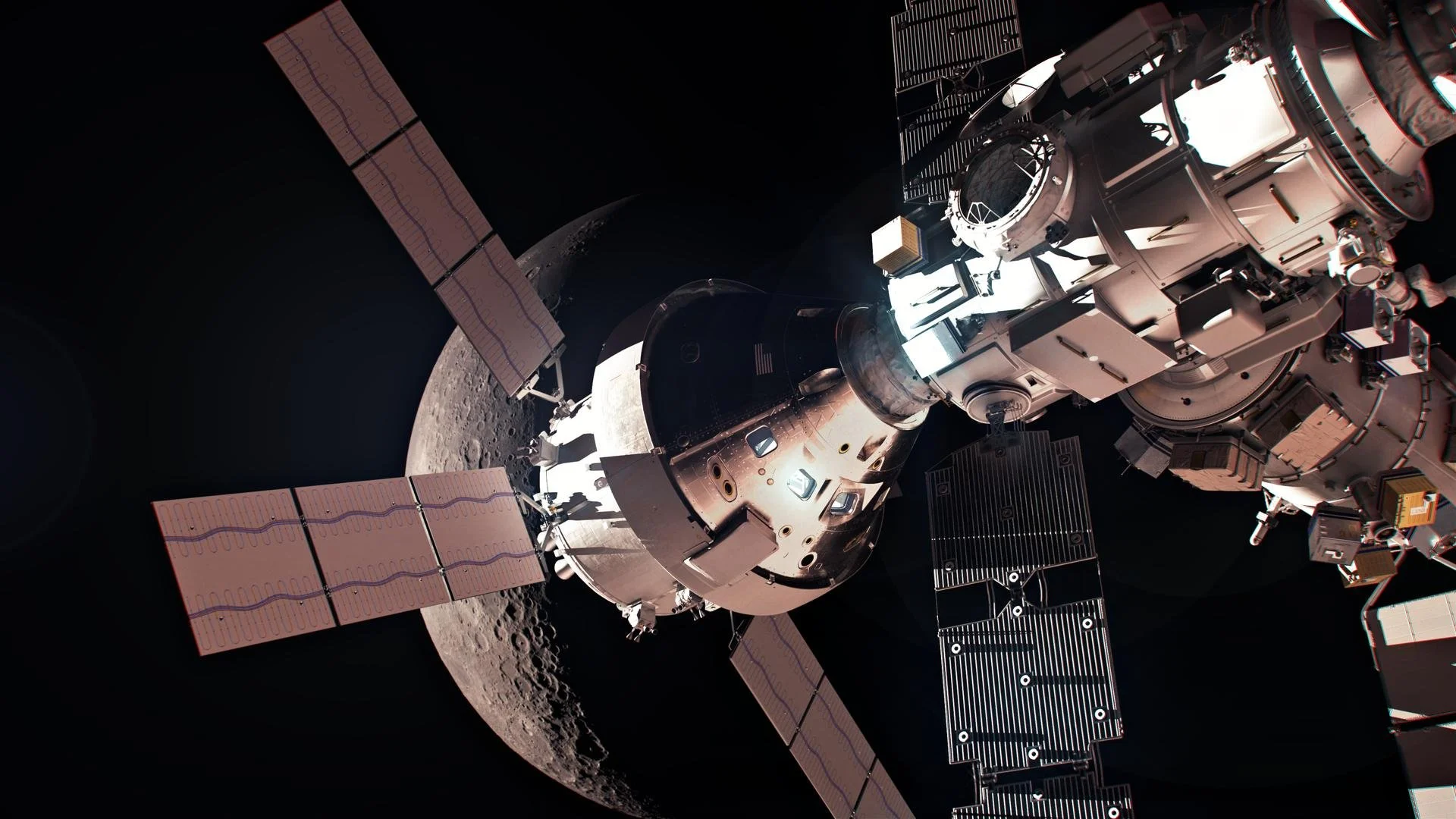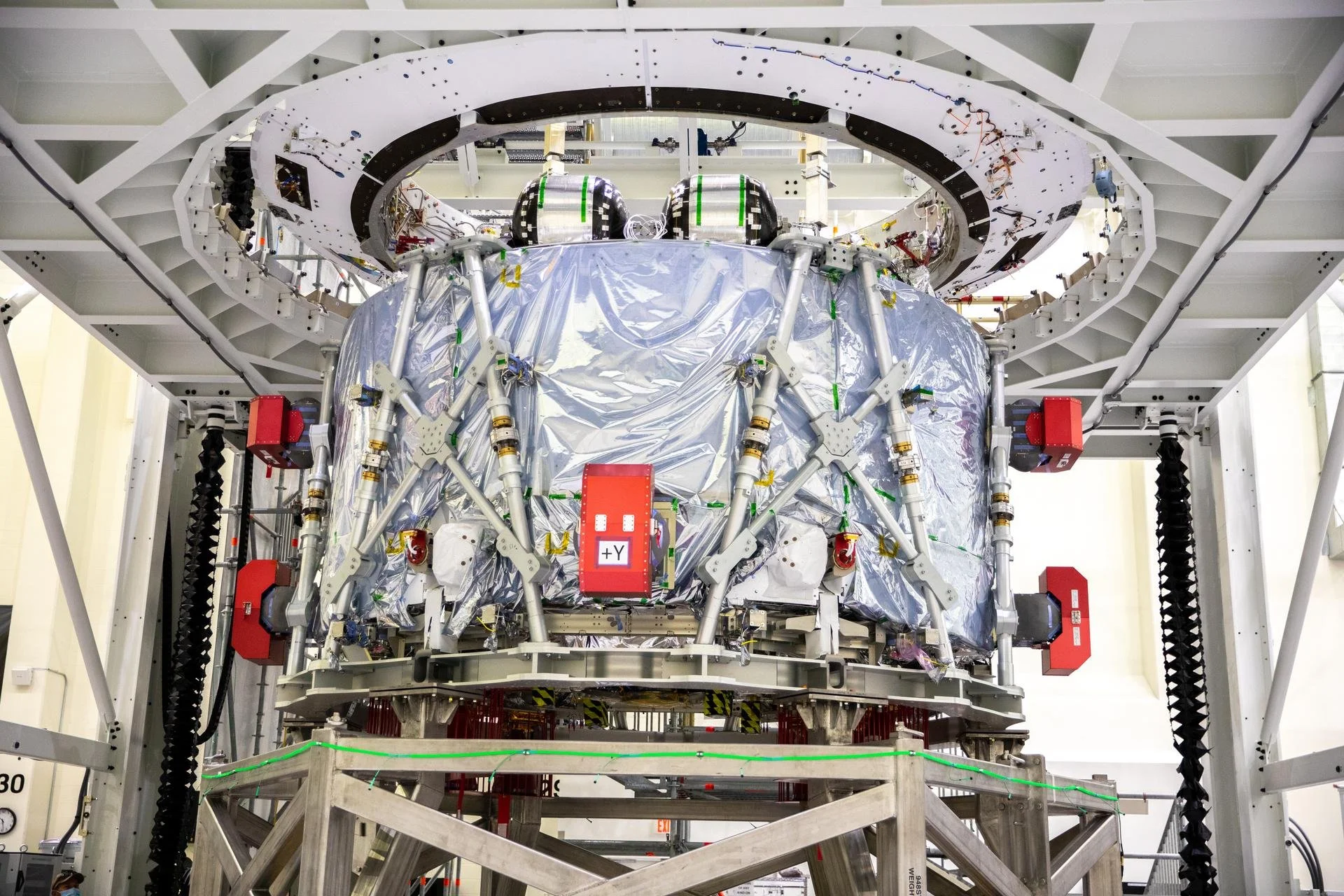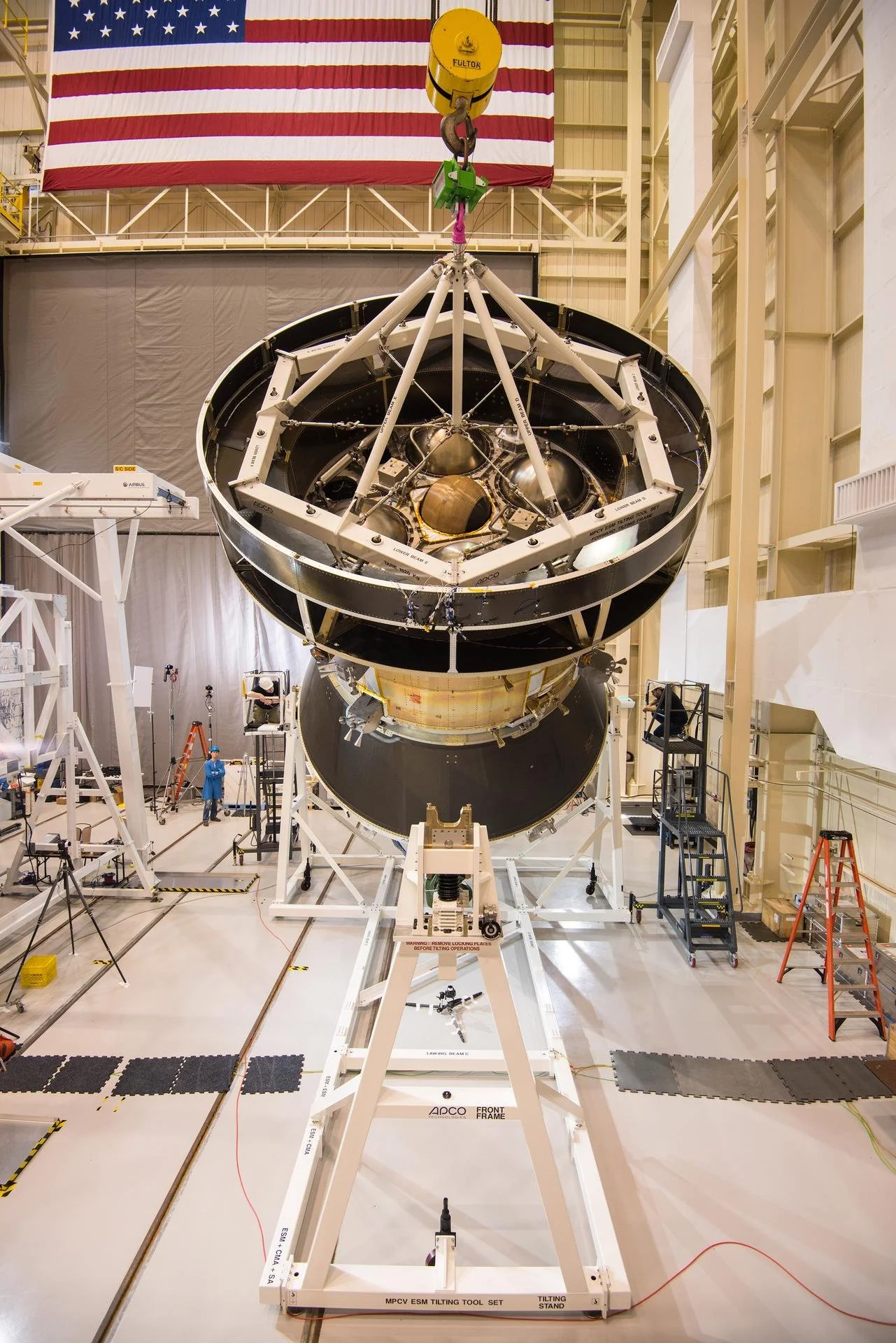Powerhouse of NASA’s Orion Spacecraft: Astronauts to the Moon & Beyond
European Service Module 2: Powerhouse
In the new era of lunar exploration, NASA's Artemis missions aim to return humans to the Moon and pave the way for deeper space travel. At the heart of this ambitious endeavor lies the Orion spacecraft—NASA’s deep space crew vehicle—and the European Service Module (ESM), its essential powerhouse.
As a co-Systems Engineer, Dr. Wiwattananon had the unique opportunity to contribute to this mission through the work on ESM-2, the service module designated for Artemis 2, the first crewed Orion flight that will venture beyond low Earth orbit since Apollo 17.
What Are Orion and the European Service Module (ESM-2)?
The European Space Agency (ESA) is providing the European Service Module (ESM) for Orion. Built by Airbus Defence and Space, the ESM supplies propulsion, electrical power, thermal control, and consumables such as water and oxygen that are essential for crewed missions. The ESM is the structural and functional backbone of the Orion spacecraft.
ESM-2, in particular, is developed for Artemis 2, the milestone mission that will carry astronauts around the Moon. This mission is a critical stepping stone in NASA’s long-term plans to establish a sustainable human presence on the Moon and prepare for future missions to Mars.
Dr. Wiwattananon Role in ESM-2
In 2017, Dr. Wiwattananon joined RUAG Space (now Beyond Gravity) in Zürich as a Systems Engineer. The company was responsible for the Solar Array Drive Assembly (SADA) for the ESM. Each ESM features four Solar Array Wings (SAW), and the SADA mechanism ensures their precise deployment and orientation to capture solar energy.
As one of three Systems Engineers on the ESM-2 team, Dr. Wiwattananon played a key role in:
Contributing to the Verification Control Document (VCD) to ensure compliance with system-level requirements
Reviewing technical documentation to support design maturity and program milestones
Coordinating cross-functional technical activities
Preparing for major NASA MPCV (Multi-Purpose Crew Vehicle) SADM project reviews
Conducting static load tests on the MPCV bracket, a critical mechanical validation step
Dr. Wiwattananon Role in other Space Exploration Projects
In addition to Dr. Wiwattananon´s work on ESM-2, Dr. Wiwattananon also supported other strategic projects, including:
Life extension assessments for an in-orbit SADM on an operational satellite
Trade-off studies for separation mechanisms on the FlexLine small launch vehicle fairing
Leading the development of a breadboard prototype for discrete separation mechanisms
Planning and executing motor testing (including brushed motor performance evaluations)
What This Means for Stella Nova’s Clients
At Stella Nova, we draw on a foundation of real-world, mission-critical engineering experience. My time on the Orion ESM-2 project wasn’t just about supporting a spacecraft—it was about ensuring safety, reliability, and functionality in some of the most unforgiving environments known to humankind.
This experience translates directly into the way we approach challenges today. Whether you're developing a space product, medical device, or high-tech system, Stella Nova brings:
Rigorous systems engineering discipline
Experience working in international multi-agency collaborations
A culture of technical integrity, verification, and performance
The ability to balance innovation with safety and reliability
The future of space and technology is built on trust, collaboration, and precision. At Stella Nova, we’re ready to help you engineer that future—just as we helped power a spacecraft on its journey to the Moon and beyond.
Ready to work with a Systems Engineer?
Let's discuss how we can bring this same innovative approach to your next project.



